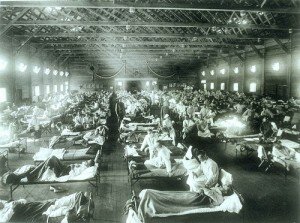The Magic Effect
Judy Balaban was the daughter of longtime Paramount Pictures president Barney Balaban. She didn’t know much about LSD when she started taking it, in the late 50s, but, she laughingly says, “I figured if it was good enough for Cary Grant, it was good enough for me!”
Before the United States introduced the world to the highest standard of living ever known, most Americans were too busy or desperate to indulge in recreational drugs. Many who did often suffered from addiction, homelessness, isolation, hunger, depravity and death.
Although drug dealers are generally viewed with contempt, that hasn’t stopped the drug industry from illegally marketing promises that injure and kill thousands of people every year. Despite the $8 billion in fines paid since 2004 to settle thousands of civil and criminal fines, the drug industry generates billions more at the expense of our health.
Regardless of these dark practices, millions of Americans continue to pursue happiness in one pill or another. Many go “all in,” betting their physical and mental health in the hope that the newest drug will deliver the happiness that usually comes with a nutritious diet, moderate exercise, hard work, moral values, discipline and meaningful spiritual connections.
Although Cary Grant knew as much about LSD as Magic Johnson knows about AZT, the drug industry uses charismatic men to push unreasonable promises. Inexplicably, our refusal to buy dangerous drugs from street vendors softens when actors or basketball players push them. Who wouldn’t buy Boniva from the Flying Nun?
To understand how and why deadly and highly addictive AIDS drugs are marketed, one needs only to look no further than Magic Johnson and his relationship with companies like GlaxoSmithKline and Abbott Labs.
Background
During the 20th century, infectious disease peaked at ~900 deaths per 100,000 during the flu outbreak of 1918-1919. From 1920-1955, infectious disease plummeted from ~500 to about 10 per 100,000. Despite the estimates and models that promoted the “AIDS pandemic” from 1985-2000, actual infectious disease mortality hardly budged.
Since 1955, infectious disease has remained statistically irrelevant. With nothing to justify their diplomas, scientists sought new threats (real or make-believe) that might guarantee their continued employment. Their wish was answered in 1971, when President Richard Nixon declared war on cancer. But after a decade of waste and corruption, Congress began to considered pulling the money plug, leaving many researchers nervous about job security.
As Congress weighed their options, CDC epidemiologist Dr. Wayne Shandera reported that five homosexual men in their 20s and 30s were stricken by a pneumonia that “ordinarily struck cancer and transplant patients.” Said Shandera, “The best we can say is that somehow the pneumonia appears to be related to gay life style.” This was incorrect because, despite gay stereotypes, only a small fraction of the gay community was actually involved in behavior that promotes drug addiction, anal sex, rectal injury, feces, untreated infections, parasites, syphilis and gonorrhea.
The report stated that five patients also suffered from infections due to a virus “that causes mononucleosis-type symptoms” and is “shown to be capable of suppressing the body’s immune defense system in a manner similar to anti-cancer drugs.”
During the next five years, AIDS became a mostly political disease. In 1986, then-White House advisor Dinesh D’Souza reported that of the 200,000 people who applied for marriage licenses and were tested for AIDS in Illinois, none tested positive for HIV. That same year, the AIDS & Public Policy Journal (APPJ) reported that AIDS only afflicted 76 out of every million US residents (.0076%), leading researchers to accept that, without “subjective estimates,” they could not justify government funding.
These low numbers were further corroborated by Armstrong (et al), who tracked the “pandemic” downward from a peak of 15 per 100K in 1996 to less than 10 per 100,000 by 1999.
Despite thirty years of hysteria, AIDS was never more than a political pandemic:
Researchers & Junkies
Although tweakers and junkies are known mostly as a public nuisance that generates 50-75% of all property crime, AIDS researchers decided in 1988 that drug addicts should have “a voice in the formulation of public policy concerning the (AIDS) epidemic” and that political efforts would be more successful “if (researchers) tap the energy and social ties of (drug addicts).”
After four years of failure, researchers modified their plan to enlist homosexual addicts. As a result, gay addicts like Peter Staley suddenly became “AIDS experts,” while the FDA allowed drug dealers like Joe Miller to push deadly drugs to gay men. (After decades of pushing cancer-causing poppers at gay dance parties, Miller killed himself after federal agents raided his company last August.)
This explains how and why drug companies fund gay activist organizations like Act Up, Treatment Action Group (TAG), and Treatment Action Campaign (TAC), magazines like POZ and websites like The Body, Avert and AIDSMeds (another Staley creation). Although the courts routinely accept (judicial notice) that drug addicts are pathological liars, drug companies found them to be useful propagandists. Homosexual activists wanted a voice, scientists wanted research funding and drug companies wanted a marketing force that could dispatch 1000 belligerent transvestites to the doorstep of any journalist or politician who dared to question the arrangement.
By January 1987, MD Magazine reported that many physicians still “did not believe the conclusions (about HIV and AIDS) reached by the Surgeon General” (Koop) at the time.
Some comments from doctors:
“The United States Public Health Service is more interested in promoting gay rights than safeguarding the health of the public,”
“Control of the disease has been totally incompetent…”
“I am thoroughly outraged at the attitude of the America Medical Association and most medical bodies to AIDS and their groveling to the left wing political ideologues that control the media and this country. It is a true dereliction of duty and ideals.”
“What we need is responsible health care and education, not a hysterical reaction from the health care community too.” (MD Magazine)
As White House Counsel James Warner struggled with the conflicting data, one prominent activist advocated the contamination of the US blood supply:
“If (AIDS) research money is not forthcoming at a certain level by a certain date, all gay males should give blood… to get national attention. If that includes blood terrorism, so be it.”
As the CDC, NIH and HHS stonewalled repeated efforts by the White House to verify the numbers, researchers fueled public hysteria with false claims that AIDS also threatened heterosexuals (video). Under the pretext of “AIDS awareness,” drug companies sponsored gay circuit parties that manufactured “a subculture characterized by (drugs) and unsafe sex, often with multiple sex partners” – encouraging behavior that sickened thousands.
The Magic Effect
When Magic Johnson reported that he was HIV+ in 1990, researchers were immediately excited by what they called the Magic Effect. Despite the myth of heterosexual AIDS, AIDS hotlines were suddenly deluged by calls from hysterical heterosexual Americans.
Despite the circuit parties, Johnson quietly resumed his life, hardly mentioning HIV or AIDS publicly. This led then-POZ editor David Drake to wonder in 1996 how Magic managed to “charge ahead despite society’s hostile wish that a person facing a life-threatening illness must martyr himself away from ‘the living’ and disappear into a solemn containment…”
“Oblivion and self-pity” were not part of Johnson’s life. From 1990-1996, Johnson nurtured his familial, spiritual and business connections. While popper-huffing meth addicts got sicker and sicker, Magic still shows no sign of the alleged illness – even after 20 years.
In the same 1996 issue, in-your-face activist Larry Kramer weighed in:
“(Magic) doesn’t have to do a fucking thing. He’s not using his power to change anything… Does it occur to Magic that there are available treatments… that will save lives? Does it occur to him that the entire continent of Africa has not received AZT because Glaxo refuses to give it to governments at a reduced price? Does it occur to him that, by speaking about this, he could shame Glaxo into doing it?”
Other pharmaceutically-funded addicts demanded that Johnson to lobby Congress, while another questioned Johnson’s racial obligations:
“I’m really glad that he can ‘forget’ he has AIDS. But I hope I’m alive when his T-Cells drop and the first lesion shows up, and he realizes that he really does have this virus and it won’t go away… I know that denial doesn’t work.”
Johnson’s reply: “I don’t let AIDS dominate my life… I know what I’m doing… and I don’t care what people say.”
Alluding to how Johnson acquired a gay disease, the POZ article concluded that it wouldn’t matter as long as he told the world “that even a ‘raging heterosexual’ like himself could get infected.”
To a businessman like Magic, such speculation could have irrevocably harmed his reputation and business relationships – especially among blacks who are, as a group, less tolerant of homosexuals than other groups.
Unlike Staley, who suffers from lipodystrophy and other drug-caused ailments, there is no verifiable evidence that Magic Johnson ever took AIDS drugs. Not only did his wife declare that he was cured, Magic admitted that he had briefly used AZT. Asked why he stopped and what AIDS drugs he was taking, Johnson responded in well-practiced Glaxo-speak: “The medication that I take is a decision that my doctors and I make.”
Magic’s didn’t start pushing AIDS into the black community until GlaxoSmithKline paid millions of dollars for Magic to push Combivir - a deal so lucrative that Magic’s ads soon appeared with celebratory stories of male prostitutes and bare-backers.
Although it’s hard to track down the financial arrangements, it now appears that Magic and his non-profit has received more than $100 million to push AIDS drugs and testing in the black community – $60 million from Abbott Labs alone – a small investment for advertising that generates billions of dollars in annual revenue.
Compare these drug-using patients…
to Magic Johnson in this recent interview (June 2010):
Tags: Abbott Laboratories, AIDS, AZT, drugs, Earvin Magic Johnson, GlaxoSmithKline, HIV, Larry Kramer, LSD
http://www.omsj.org/corruption/the-magic-effect








Um comentário:
magnificent submit, very informative. I'm wondering why the opposite specialists of this sector don't realize this.
You should continue your writing. I am sure, you've a huge readers' base already!
My site :: useful content
Postar um comentário